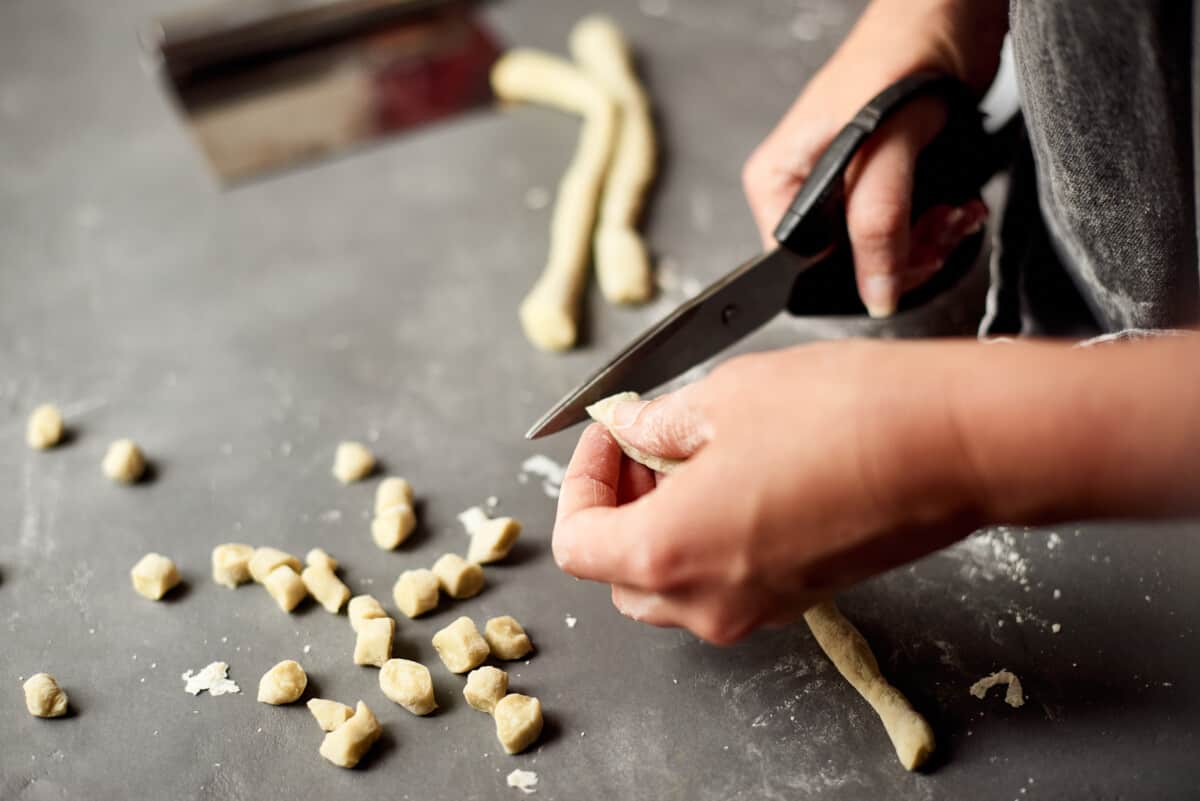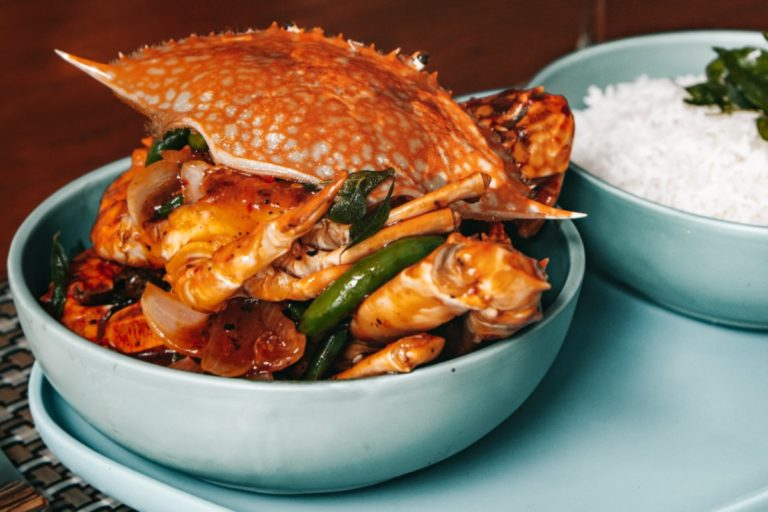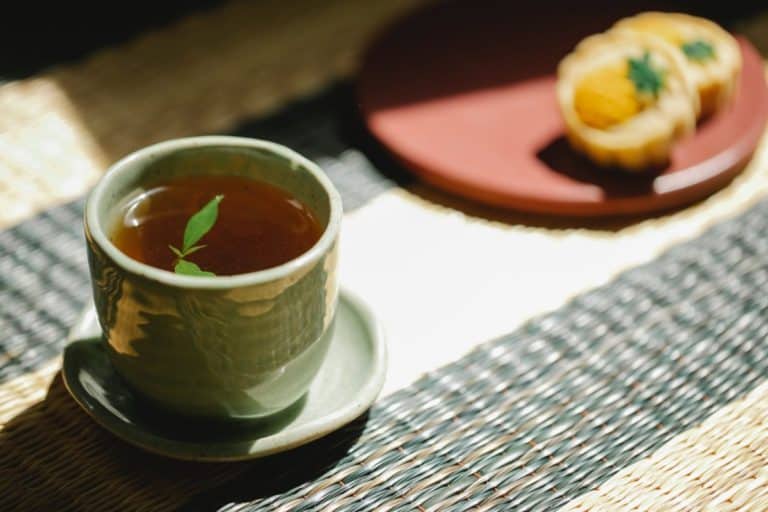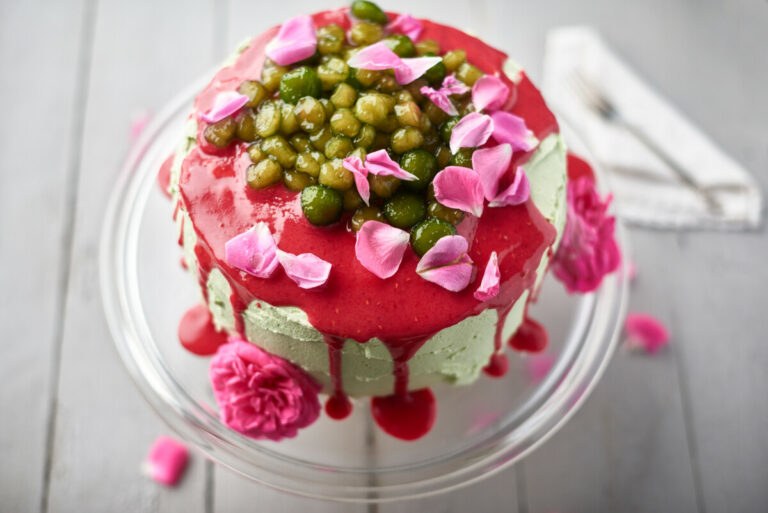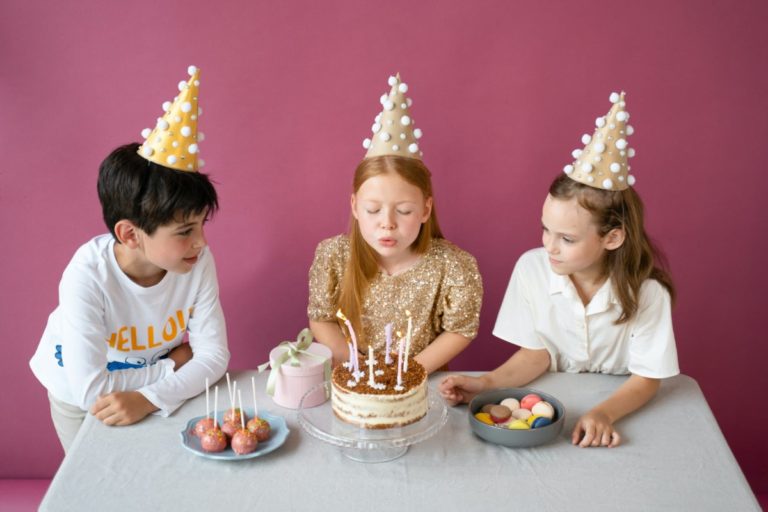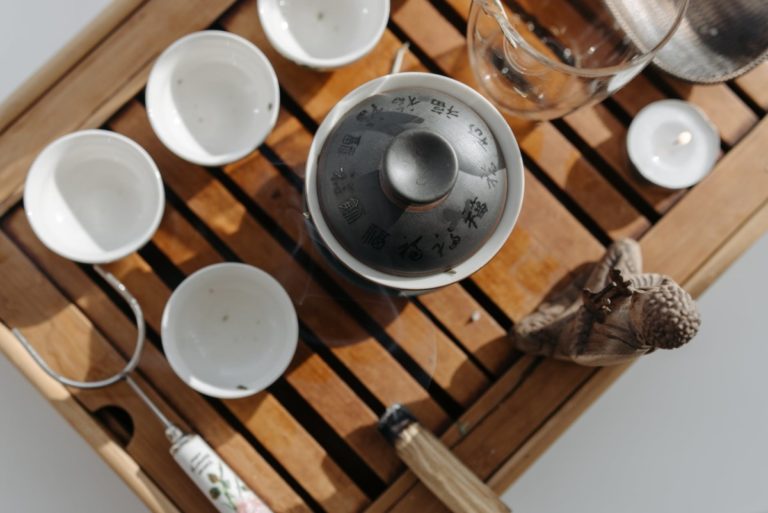How to Make Boba from Scratch – Easy at Home!
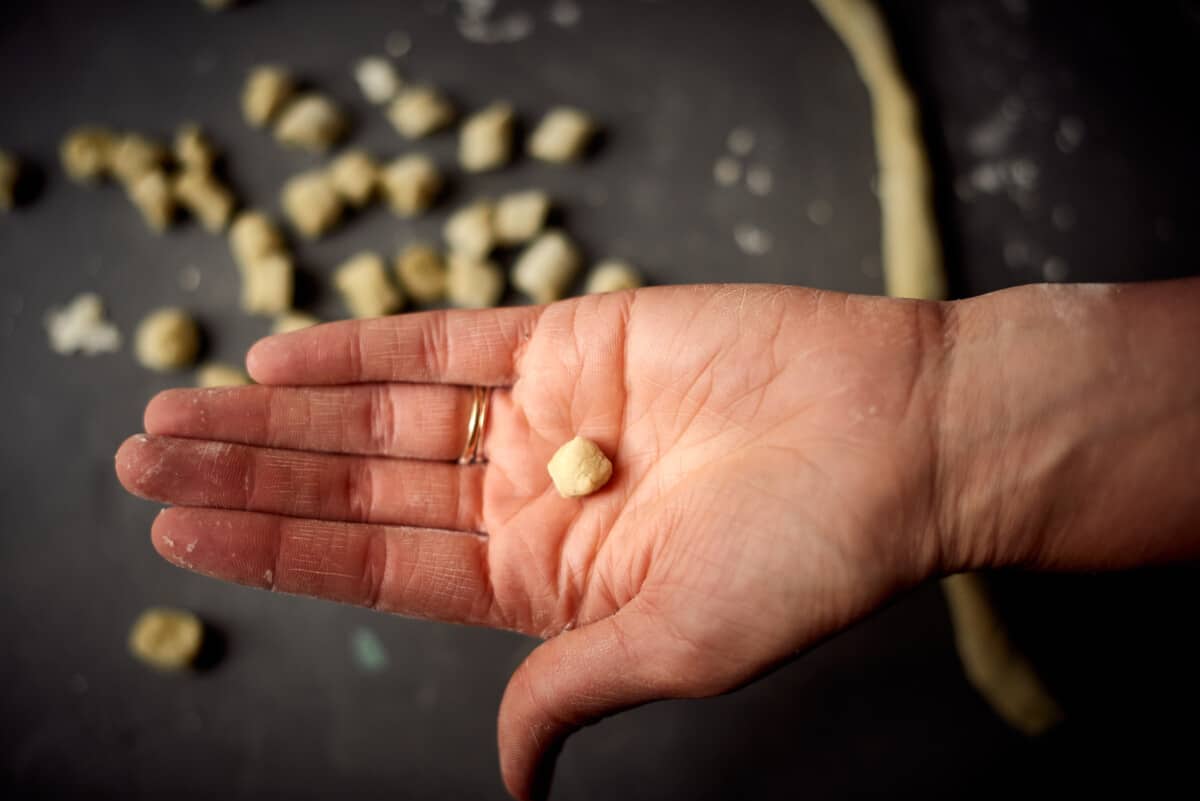
Boba or tapioca pearls are the chewy, gummy balls that have become a staple in popular boba tea or bubble tea drinks. Boba adds texture and flavor to any drink or dessert it’s added to, and it’s surprisingly easy to make from scratch once you get the hang of it. Making boba from scratch means you can customize the size and sweetness level to your preference. Say goodbye to store-bought boba and follow this ultimate guide on how to make boba from scratch.
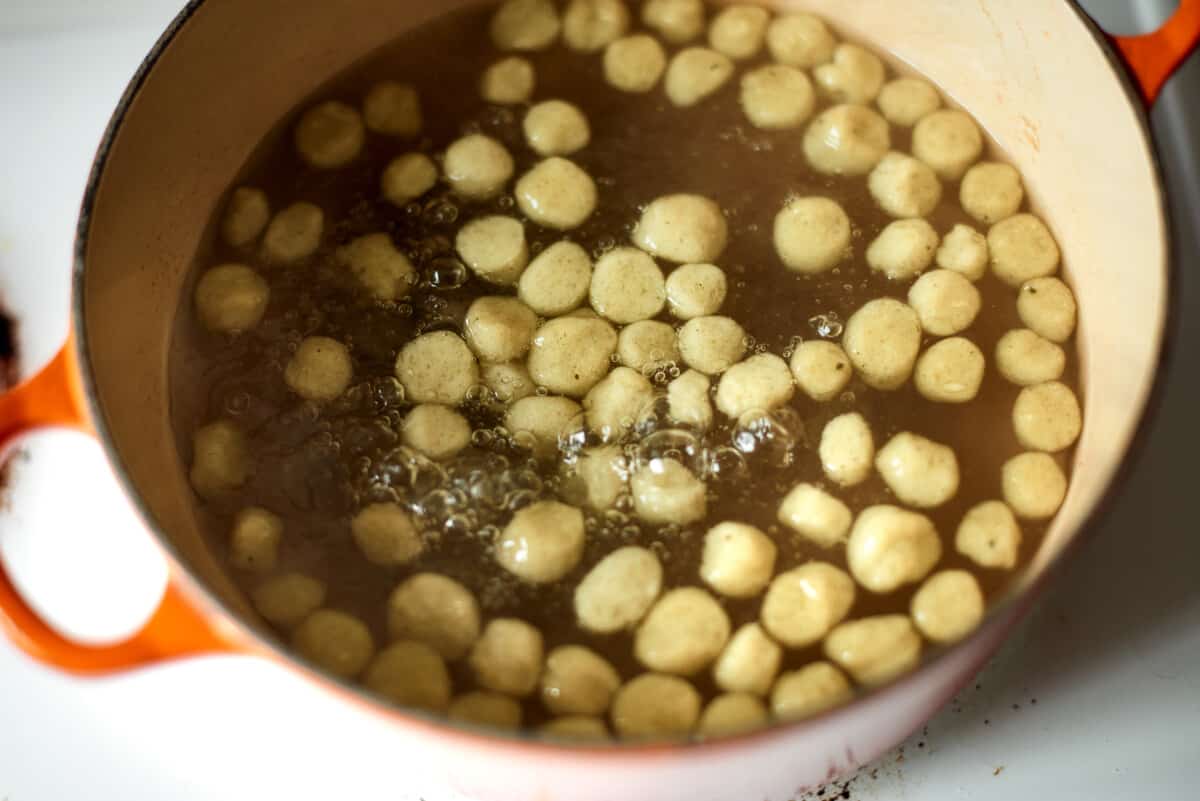
How Boba is Made
You only need three ingredients – tapioca starch or tapioca flour, sugar and water! Tapioca starch come from the cassava root, which is ground into flour form to make tapioca pearls. When mixed with boiling water over medium heat for 5-10 minutes while constantly stirring, the mixture thickens and forms a dough. You then form small round balls and boil them until they become soft an chewy.
Ingredients
Tapioca flour – Make sure you are using tapioca flour or tapioca starch (just another name for tapioca flour). Do NOT use cornflour or regular flour. It won’t work.
Brown sugar – Brown sugar gives the boba balls a lovely flavor. But you can use white sugar.
Hot Water – Super hot, boiled water, otherwise the dough will get this weird consistency. It makes for a great science experiment if you use cold water!
Flavor and color of your choice – Dark brown or black is a popular color and you can use brown sugar or activated charcoal to get a deeper color. Here we are using Matcha Powder, because we are using them for our gorgeous matcha and raspberry boba tea cake recipe. But you can choose any of the colors and flavors below.
Different colors and flavors of boba
You can make your boba any color you like. Here we have used matcha powder and green food coloring to flavor the boba, but there are many variations.
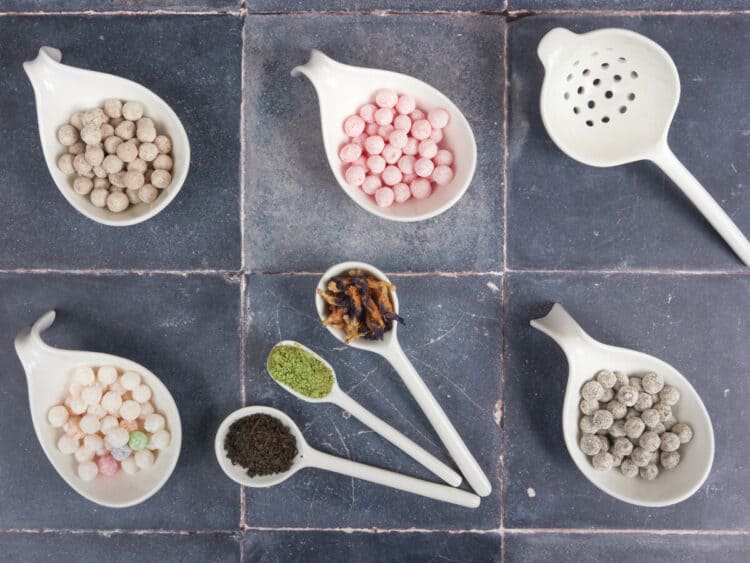
Black – Use brown sugar or molasses or to get a deeper color use activated charcoal or add a few drops of black food coloring.
Red – Try adding red cabbage juice or beetroot juice to the recipe for a vibrant pink hue that can turn into deep red after being heated.
Blue – A few drops of blueberry extract should do the trick! Alternatively, butterfly pea flower tea works great too.
Yellow – Turmeric powder does wonders in this case! Just mix it with the boiling water first before adding it to the tapioca pearl mixture for more even distribution throughout your concoction.
Orange – Orange juice concentrate or carrot juice will give you beautiful orange-tinted boba pearls when used in small amounts (the flavor can become overly powerful if too much is added).
Green – Matcha powder will bring out lovely green hues in your bubbles when incorporated carefully into the mix.
Purple – You can achieve gorgeous shades of purple by blending together equal parts blueberry extract and grape juice.
How to make boba
Step One: Make the tapioca dough
- Bring the water to a boil in a small pot or pan.
- Add 50 grams of sugar and stir until it has dissolved.
- Mix 1/2 teaspoon matcha powder (if using) in with the tapioca flour.
- Once the water and sugar mixture is boiling, add in half the tapioca flour and stir quickly with a fork. The mixture will become sticky. Turn the stove heat off but keep the pot on that stove plate.
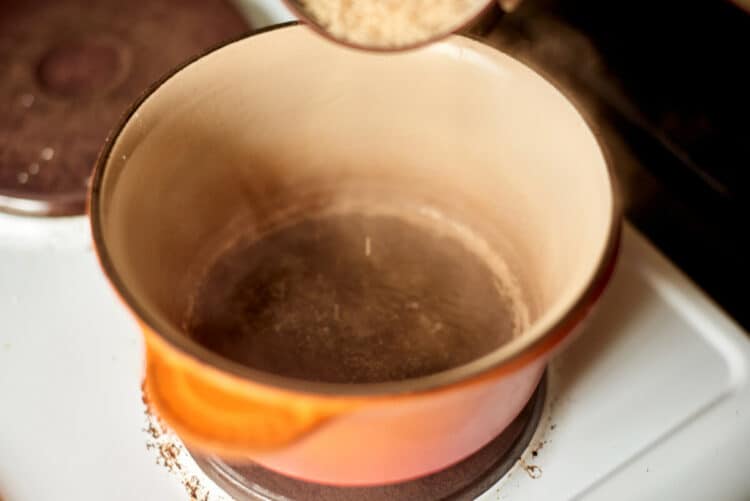
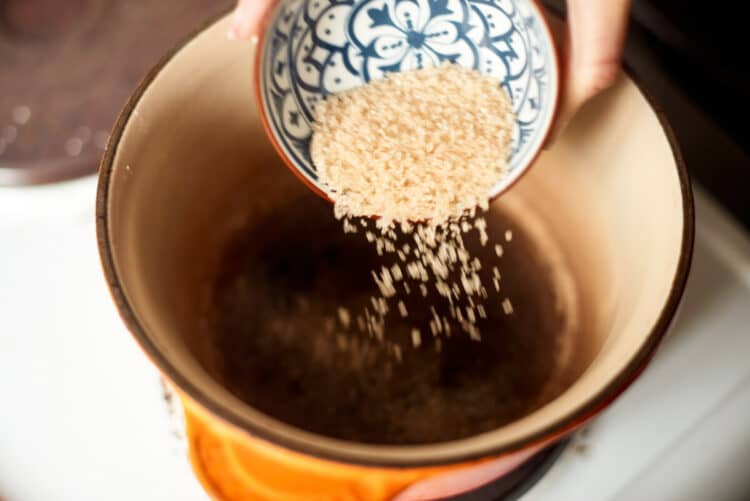
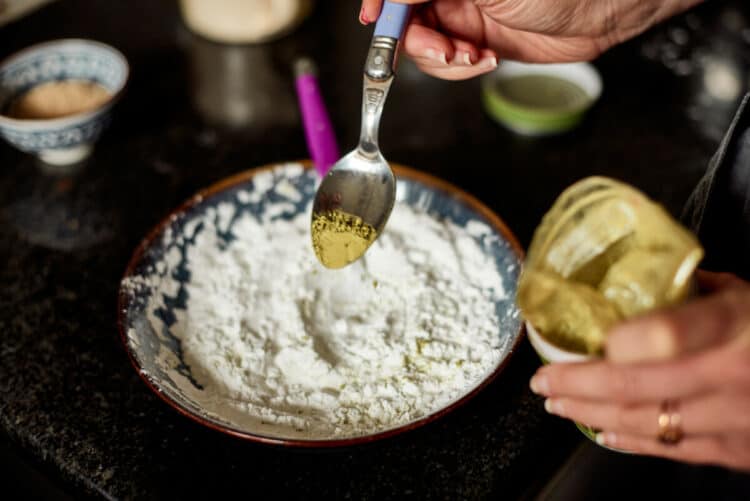
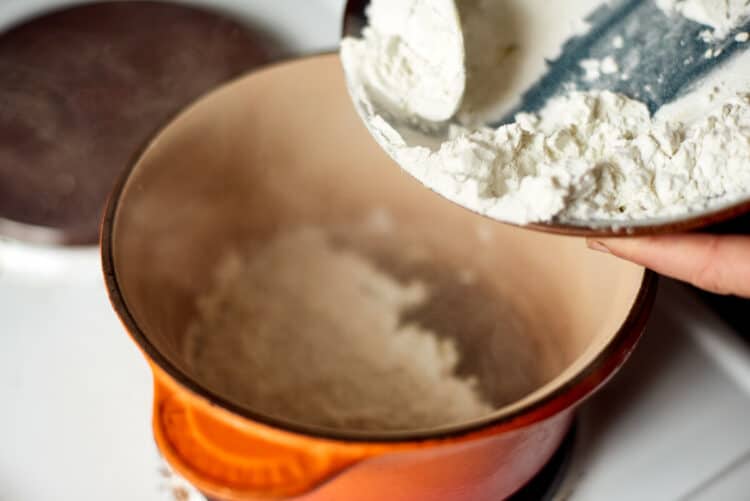
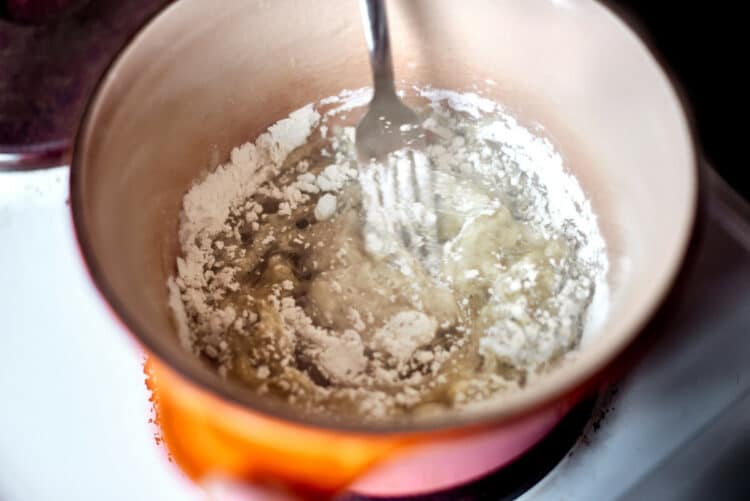
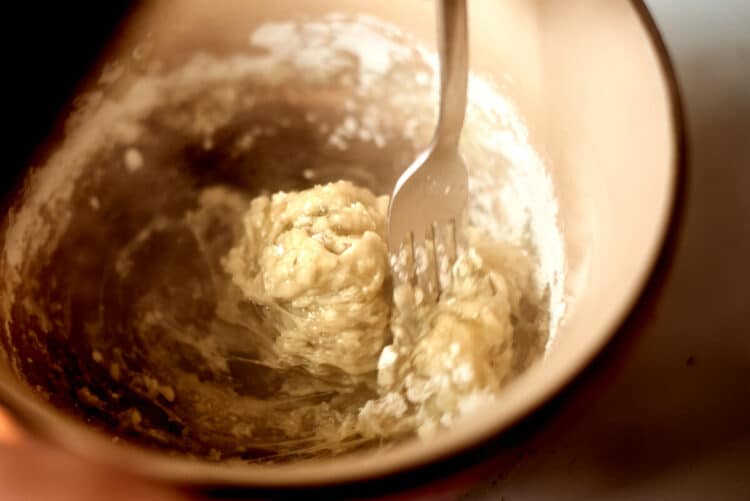
5. Begin to add in the second half of the tapioca flour, a teaspoon at a time, working quickly. Once you have a thick, tacky dough, add in the balance of the flour and roll the dough in it.
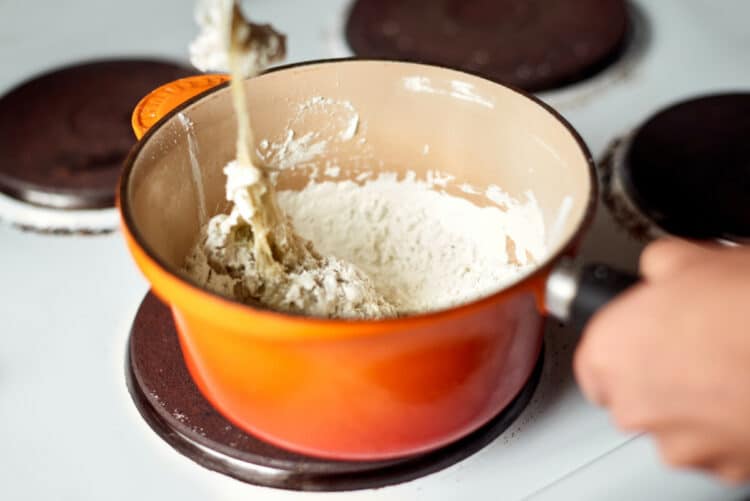
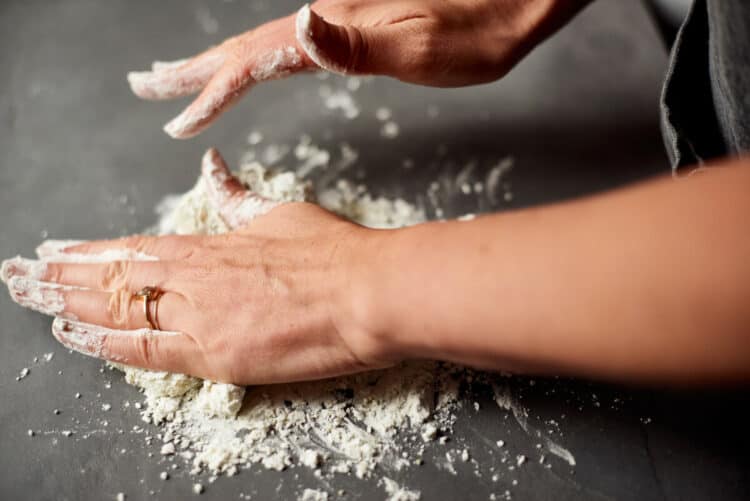
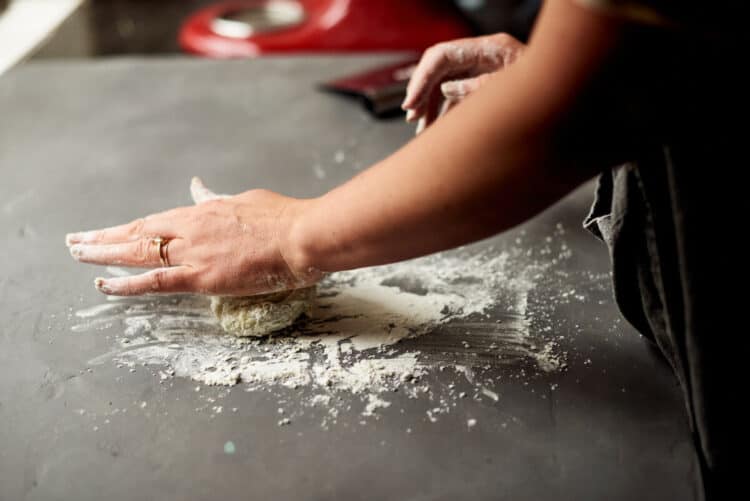
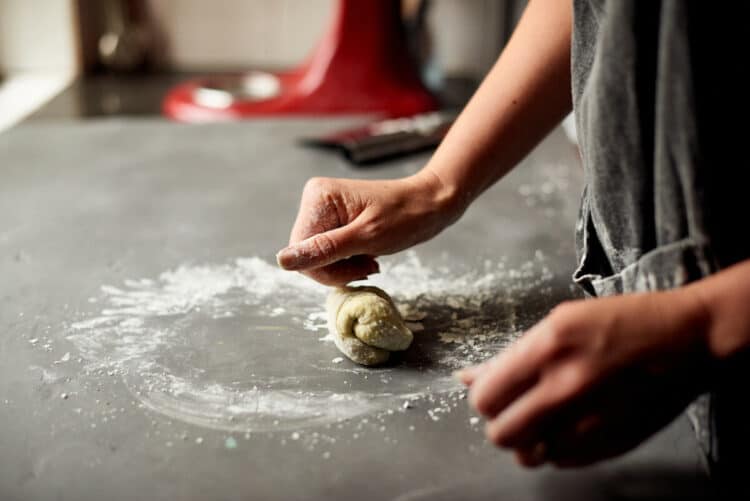
6. Dump the dough and excess flour onto a clean surface and begin to knead the dough. Note that it will be hot (it must be hot when you work with it), so consider wearing gloves if you have sensitive skin. Knead the dough until it is smooth and pliable.
Step 2: Make the boba pearls out of the dough
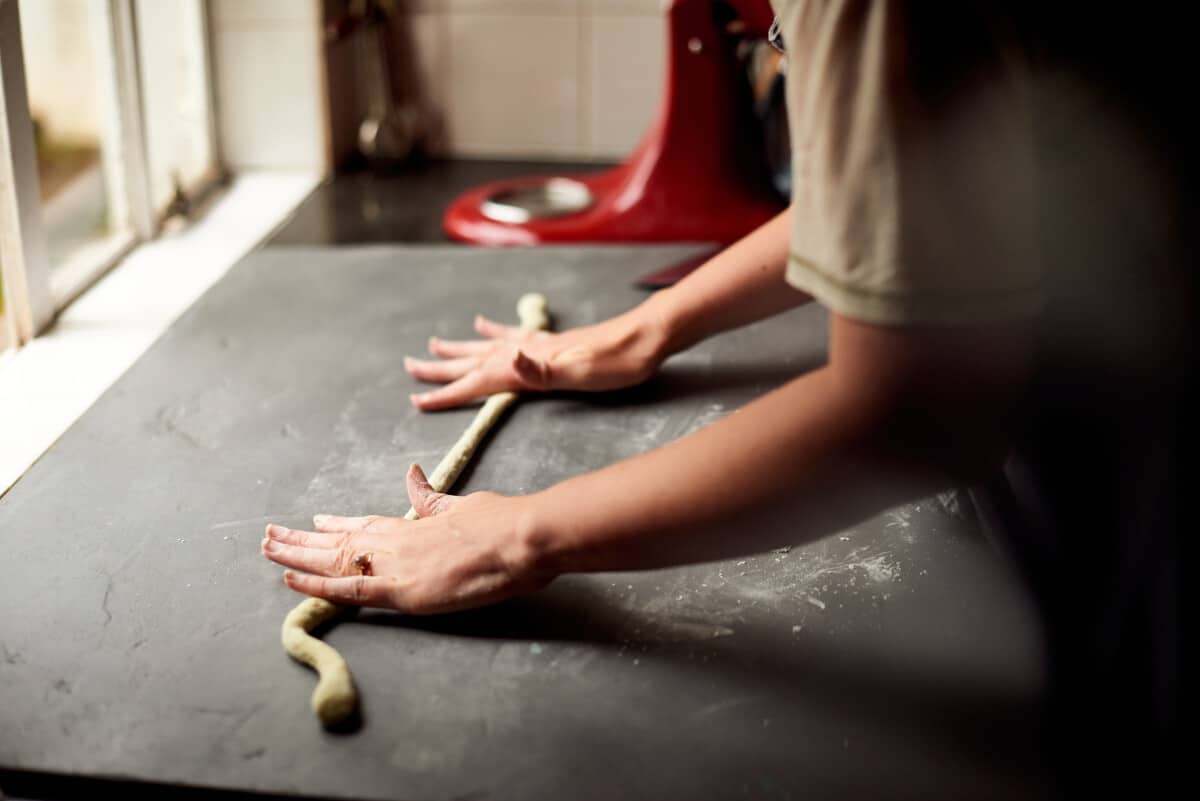
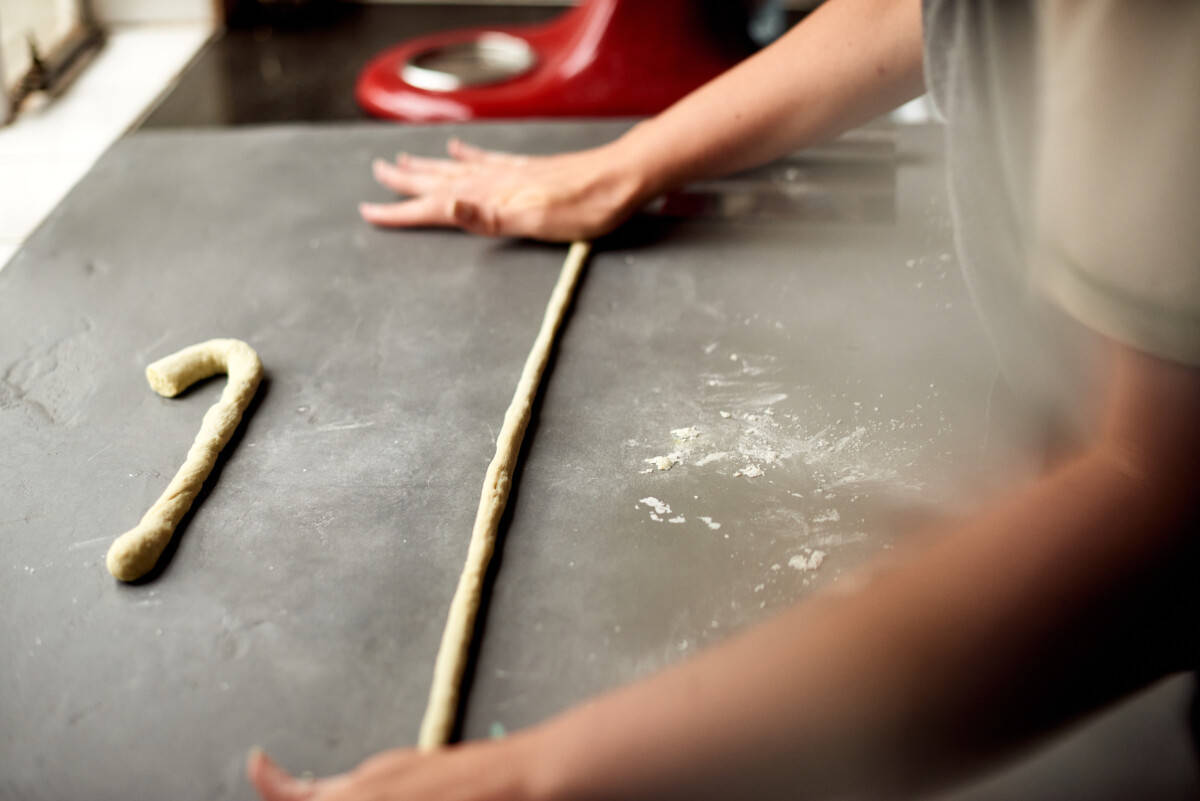
7. Next, roll the dough out into a long sausage/rope shape. Cut the dough roll in half and roll it out thinner. Cut this piece again. At this point, you’ll need to think about how small or large you want your boba. Usually, they are about 1 cm in diameter, but if you are going to use them in your tea, check with your straw diameter! The width of the dough roll will indicate the diameter of the ball but take into account that they grow slightly when you boil them later.
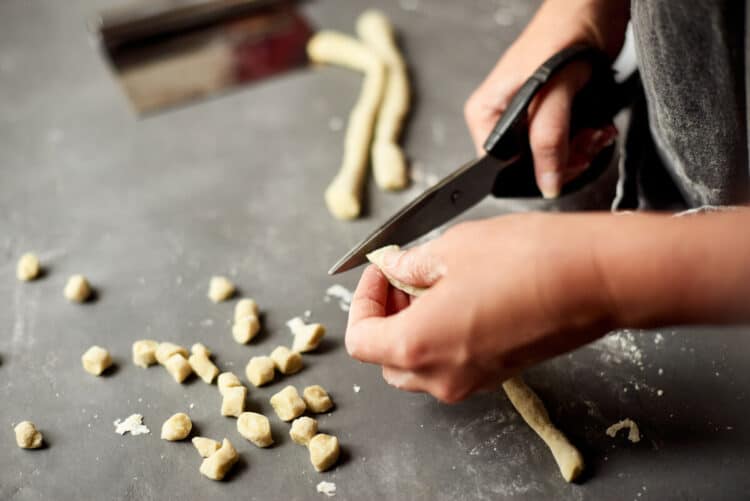
8. Cut the dough into little squares using a pastry cutter or kitchen scissors.
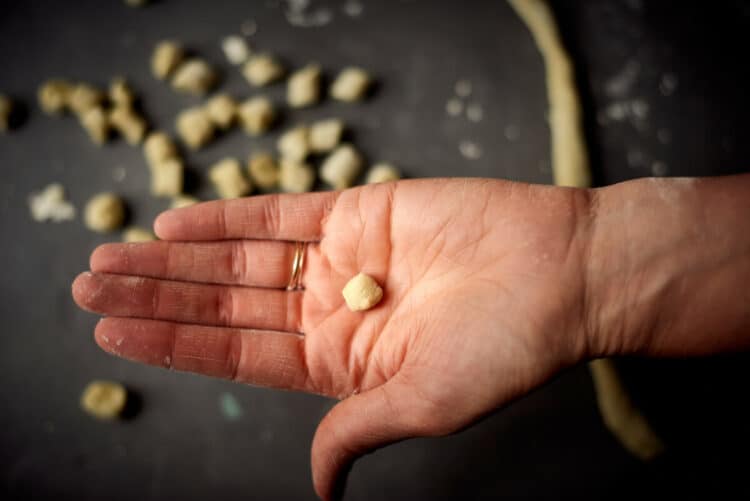
9. Roll these little squares in your hands to create a round shape – or as close to round as you can. Don’t worry too much if they are uneven when you are making these boba tapioca balls from scratch at home, that’s bound to happen!
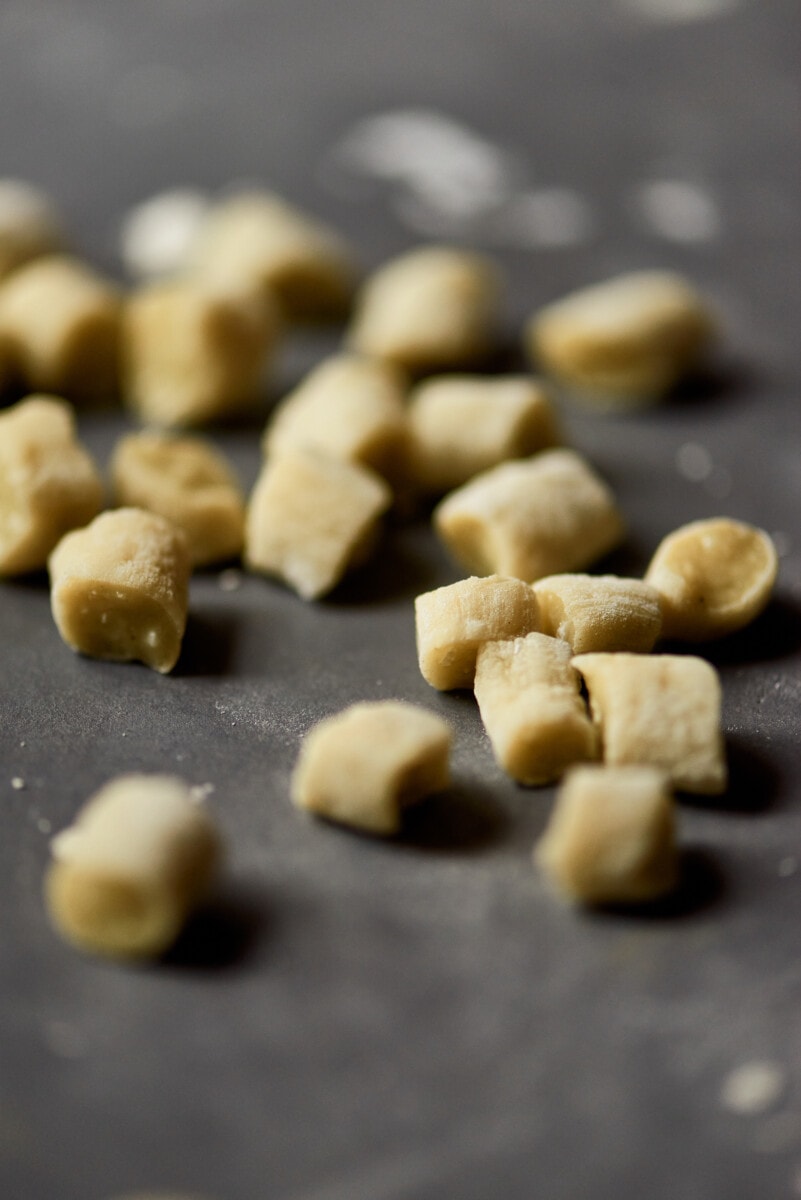
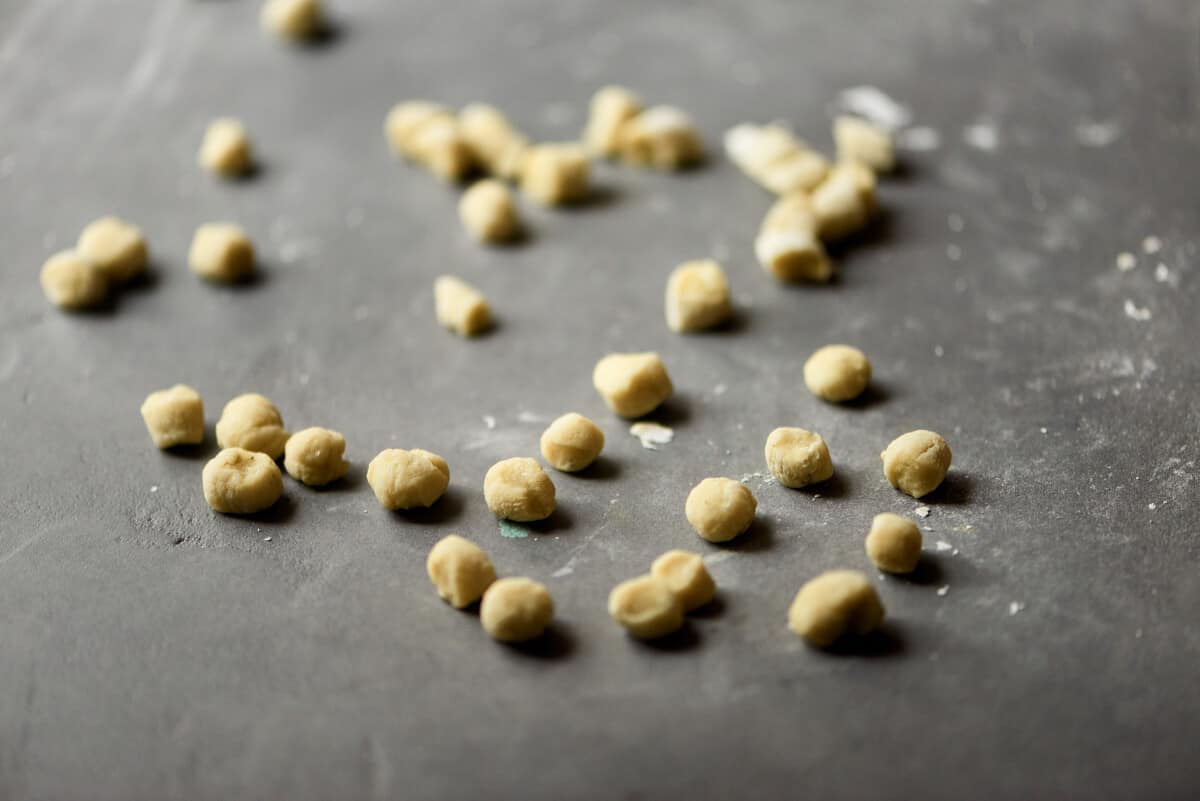
Step 3: Cook the boba tapioca balls
10. Bring a pot of water to a boil – work with one-part boba pearls to 8 parts water.
11. Boil the boba until they are cooked, stirring occasionally. Time varieties according to the size you make but test them after 15 minutes. Don’t overcook boba, or they will become mushy and sticky! You can make them as firm or as soft as you like.
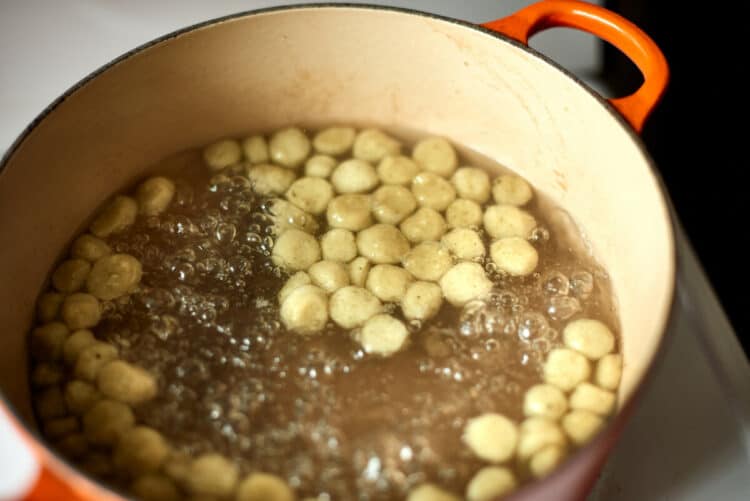
Step 4: Drain and then seep/cover in sugar syrup
12. Once the boiled boba pearls are ready, drain them and plunge them into a bowl of iced water to stop the cooking process. Drain again.
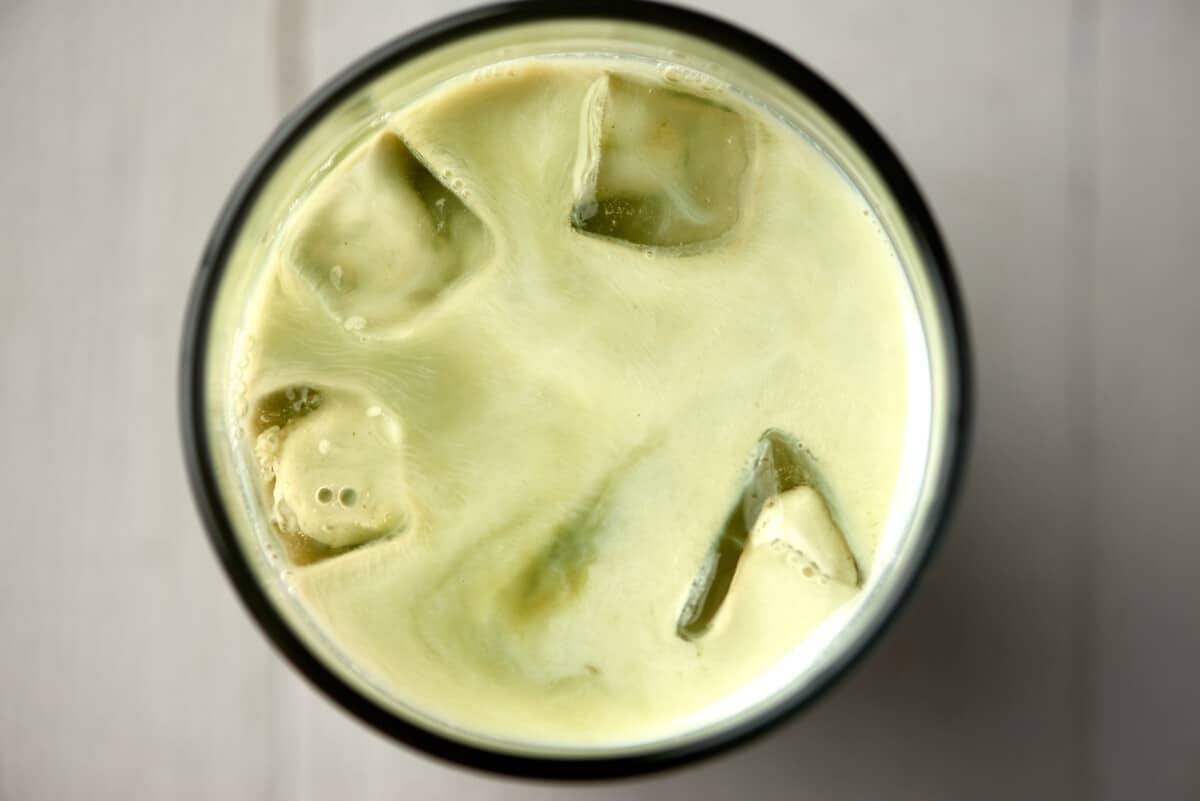
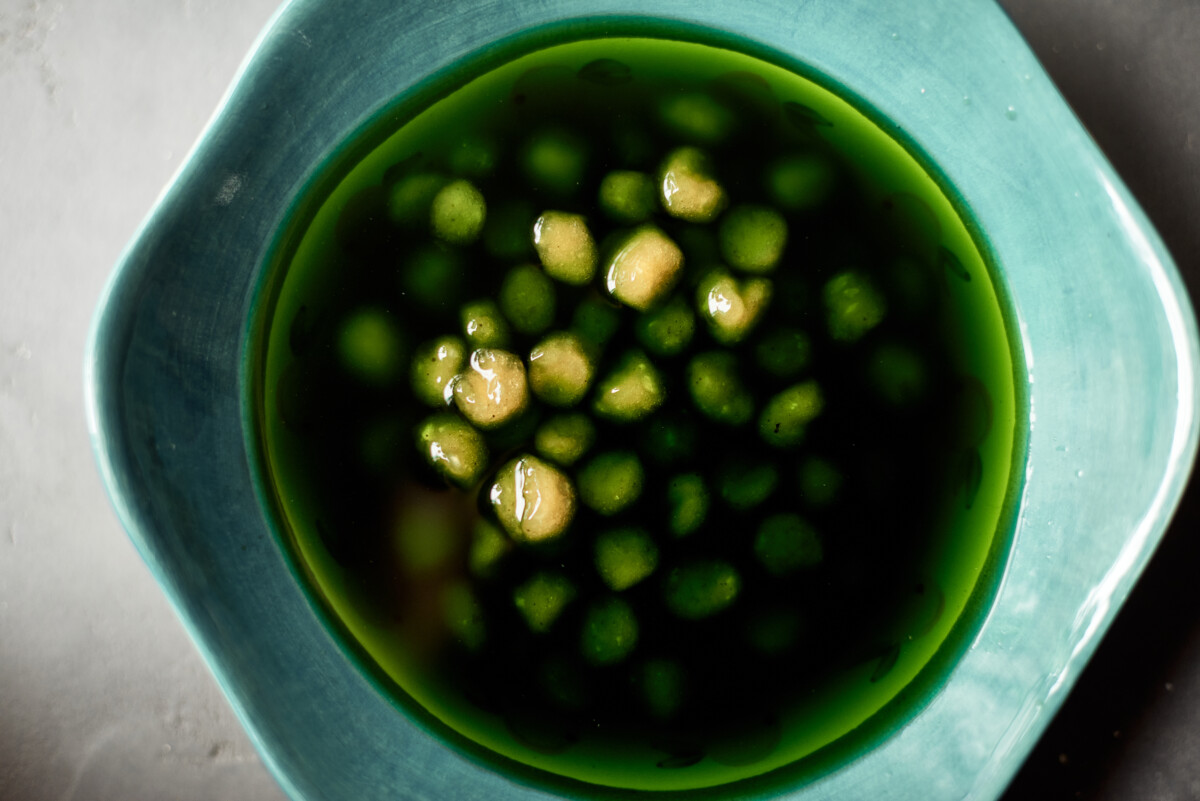
13. Place a cup of water into a pot and bring it to a boil; add in the balance of the brown sugar and stir to combine. If you are making matcha boba balls, then mix a little of the boiled water with the matcha powder, and then add it back in. This water will be your “steeping” liquid. Add the cooked boba to the sugar steeping liquid and let it soak for 10-20 minutes before serving.
Step 5: Use boba tapioca balls in your favorite tea or dessert!
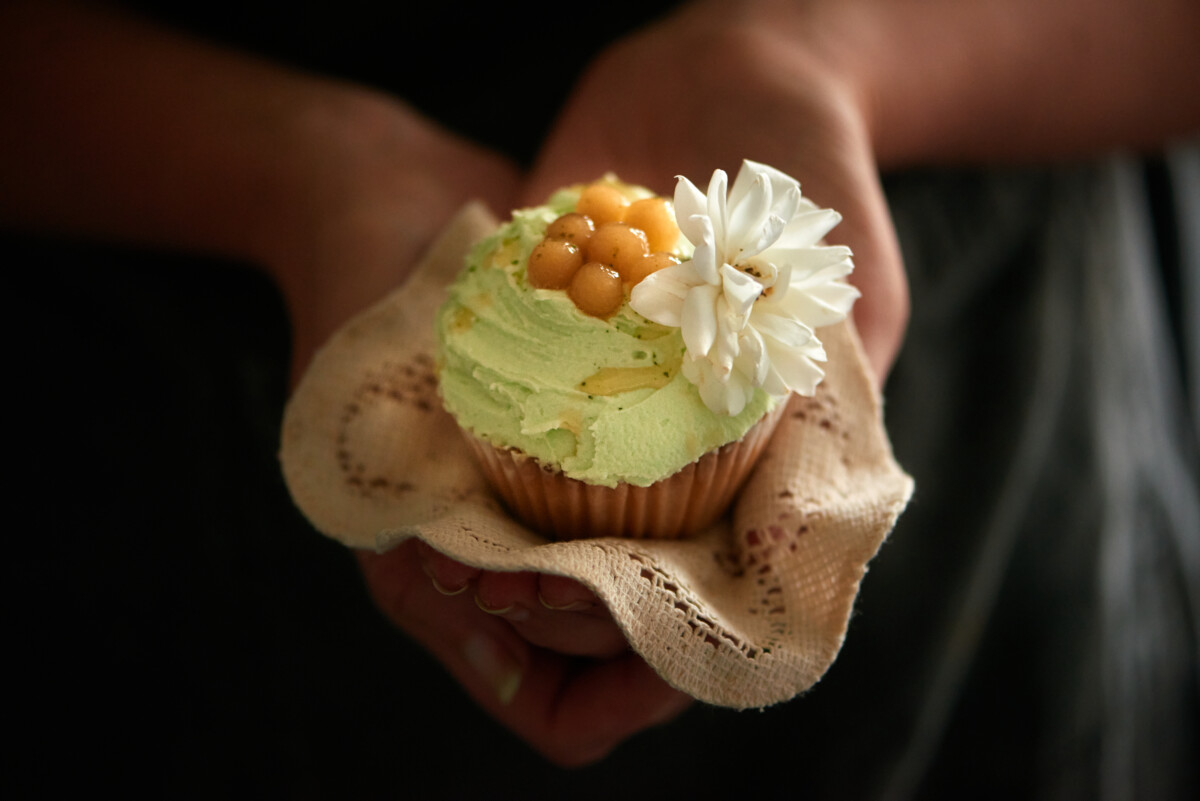
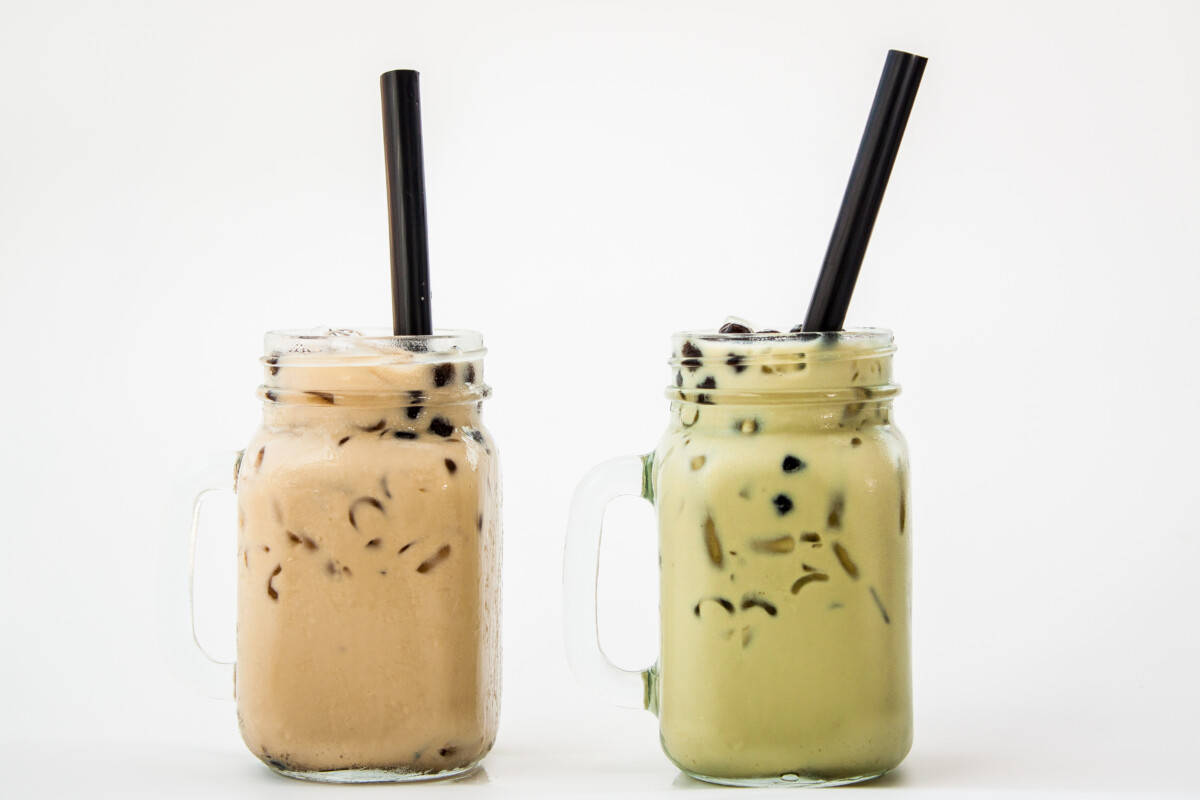
Tips
- While you need to work quickly while making the boba pearl dough, you also need to ensure the liquid and tapioca mix through properly with each addition; this is to avoid any lumps.
- You can set the rolled boba pearls aside, cover them and cook them at a later stage if you need to.
- The cooked and steeped boba will last a day or two – see our FAQ below for storage.
- Don’t add too much matcha powder to your tapioca. With matcha, a little bit goes a long way! You can add a little green food coloring to the steeping water if you want a brighter green. The boba pearls in my steeping photo are made with matcha and a touch of green food coloring, but I’ve made them with just matcha, and I love the natural, mossy result too.
- The longer you boil the boba pearls, the softer they will be and the more difficult it is to retain their structure.
Final thoughts on making boba from scratch at home
Once you get the hang of it, making your own boba from scratch is really worth it. Not only is it way less expensive – you don’t have to spend a ton of money at your nearest bubble tea shop – but it is also very versatile. You can make your own bubble tea in all kinds of different flavors, and also put them into lots of different desserts, like our matcha and raspberry bubble tea cake. So, gather up those ingredients, roll up your sleeves, and get cooking! Bon appetit!
How to Make Boba from Scratch
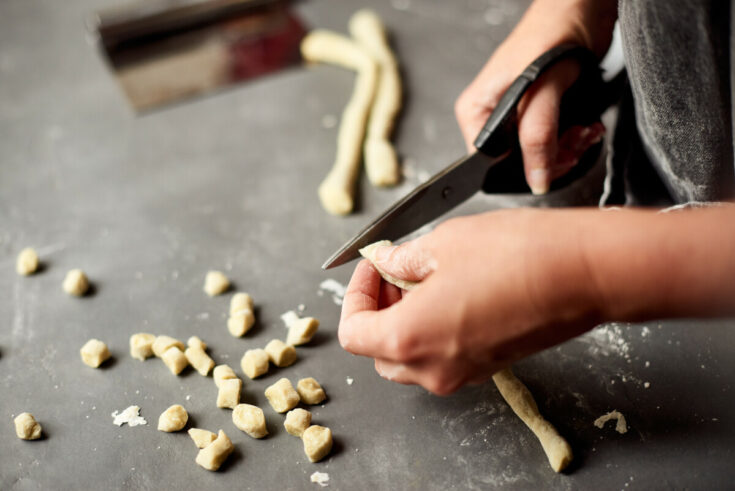
Ingredients
- 100g/3.5 oz tapioca flour
- 80g / 6 1/3 TBS brown sugar or coconut sugar if you plan on creating a different colored boba pearl.
- 60ml /4 TBS water
Instructions
- Bring the water to a boil in a small pot or pan.
- Add in 50g of the sugar and stir until it has dissolved.
- Mix ½ the matcha powder (if using) into the tapioca flour. Otherwise add your food coloring (if using) to the sugar and water mixture.
- Once the water and sugar mixture is boiling, add in half the tapioca flour and stir quickly with a fork. The mixture will become sticky. Turn the stove heat off but keep the pot on that stove plate. The dough should stay very warm.
- Begin to add in the second half of the tapioca flour, a teaspoon at a time, working quickly. Once you have a thick, tacky dough, add in the balance of the flour and roll the dough in it.
- Dump the dough and excess flour onto a clean surface and begin to knead the dough.
Note that it will be hot (it must be hot when you work with it), so consider wearing gloves if you have sensitive skin. Knead the dough until it is smooth and pliable. - Next, roll the dough out into a long sausage/rope shape. Cut the dough roll in half and roll it out thinner. Cut this piece again. At this point, you’ll need to think about how small or large you want your boba. The width of the dough roll will indicate the diameter of the ball but take into account that they grow slightly when you boil them later.
- Cut the dough into little squares using a pastry cutter or kitchen scissors.
- Roll these little squares in your hands to create a round shape – or as close to round as you can.
- Bring a pot of water to a boil – work with one-part boba pearls to 8 parts water.
Once the water is boiling, put int the boba until they are cooked. Time varieties according to the size you make but test them after 15 minutes. You can make them as firm or as soft as you like. Stir the boba while cooking. - Place a cup of water into a pot and bring it to a boil; add in the balance of the sugar and stir to combine. Mix a little of the boiled water with the matcha powder (if using), and then add it back in. This water will be your “steeping” liquid.
- Once the boiled boba pearls are ready (they should be chewy like gummy bears), drain them and plunge them into a bowl of iced water to stop the cooking process. Drain again and steep them in their steeping liquid.
Notes
- While you need to work quickly while making the boba pearl dough, you also need to ensure the liquid and tapioca mix through properly with each addition; this is
to avoid any lumps. - You can set the rolled boba pearls aside, cover them and cook them at a later stage if you need to.
- The cooked and steeped boba will last a day or two.
- You can freeze the uncooked boba pearls for 2-3 months in an airtight container.
- You can add a little green food coloring to the steeping water if you want a brighter green. The boba pearls in my picture are made with matcha and a touch of green
food coloring, but I’ve made them with just matcha, and I love the natural, mossy result too. - The longer you boil the boba pearls, the softer they will be and the more difficult it is to retain their structure. I prefer the softer textured pearl for cake-making/eating
purposes.
Nutrition Information:
Yield:
4Serving Size:
1Amount Per Serving: Calories: 229Total Fat: 0gSaturated Fat: 0gTrans Fat: 0gUnsaturated Fat: 0gCholesterol: 1mgSodium: 10mgCarbohydrates: 57gFiber: 0gSugar: 24gProtein: 0g
This nutrition information was provided by a nutrition calculator and should only be used as a guide. Please consult your dietician or medical practitioner for more precise information.
FAQ
Does Boba need to be refrigerated?
Yep, boba does need to be refrigerated. Boba can last about 4 hours once you make them outside the fridge, but then you need to put them in the fridge. This is especially important for home made boba because it doesn’t contain any preservatives that can keep it from spoiling.
How long does boba last in the fridge?
In general, home made cooked boba will last about 3 days in the refrigerator if stored properly. To properly keep them fresh and flavorful, make a simple syrup by combining equal parts sugar and water in a pot on your stove. Heat the mixture over medium heat until the sugar has dissolved completely. Once the syrup has cooled enough to handle safely, put it into an airtight container or jar and add your homemade boba – it should stay covered with syrup at all times.
How long do tapioca pearls last after cooking?
Only about 3 days if you keep them in the fridge.
How to store homemade boba?
It depends on whether they are cooked or not. See below.
How to store boba pearls after cooking?
You need to refrigerate the cooked boba in a sealed container, covered in a sugar syrup so they don’t dry out. They will last about 3 days.
How to store uncooked boba pearls?
Once you make boba pearls from scratch, you can coat them with a thin layer of tapioca flour so that they don’t stick to one another. You can keep them in an airtight container overnight but the best best way to store them for longer is to freeze them. First place them on a flat pan in the freezer for about an hour, then transfer them to an airtight container or plastic bag and you can freeze them for a few months.
Are tapioca pearls supposed to be chewy?
Yes! They are supposed to be chewy like gummy bears. This is because they are made from the root of the cassava plant and they contain a lot of starch. The way you prepare the tapioca will also affect its texture – if you boil it too long it can become mushy; but if you don’t boil it long enough, then they may remain a bit hard. So the best test is just to bite into one. If it has the texture and chewiness of a gummy bear, then that’s what it’s supposed to be like.
Can you make boba with cornstarch or cornflour?
No. People often ask how to make boba from scratch without tapioca starch, and unfortunately the answer is – you can’t. At least not the real kind that are chewy like gummy bears. You can make boba with cornstarch aka cornflour, but it will not have the same texture and it will not taste the same. You can find a full explanation and a delightful recipe for cornstarch boba shaped balls here, but just to be clear, they will have a different texture and taste.
How to make boba soft again?
Put the boba in hot water or hot sugar syrup for several minutes. This method is simple and straightforward – just put the boba in a bowl or pot of hot water and let them soak for about 10 minutes or until they’ve softened up.
What does matcha boba taste like?
It’s earthy and sweet at the same time. The taste of matcha comes from the high-quality green tea leaves that are finely ground into a powder. This gives it its distinctively deep-green color and subtle grassy flavor. When mixed with milk or other dairy alternatives, like almond or oat milk, in a bubble tea drink, it becomes even more creamy and smooth on your palate.
What does brown sugar boba taste like?
A bit tricky to describe, but I would say the flavor of matcha boba pearls is sweet but not overly so. The brown sugar gives the boba a note of caramel with a hint of honey.
Why is boba so expensive?
Boba is expensive because the boba pearls are generally imported. And then if you are buying bubble tea, you have to add the cost of labor. It’s the same reason you pay more for a super latte at your local cafe, than if you make the same cup of coffee at home using your coffee machine. This is why learning how to make your own boba from scratch for you desserts or bubble tea is sooo worth it. And it is much healthier as well as you are not getting all those preservatives and chemicals.
Why is boba black?
Most boba pearls are black in color because they are made with dark brown sugar or molasses, which gives them their distinctive color and flavor. And in this case they will be dark brown. But some people also add black food coloring or activated charcoal to make them black.
Why is boba so popular?
Good question! The short answer is that boba is popular because it is tasty and fun! But if you think about it a bit more, there are a few factors that have helped boba to become so popular:
- Unique texture: The chewy texture of the tapioca pearls is what makes boba unique and fun to drink and even put in different desserts such as our matcha and raspberry bubble tea cake.
- Customizable: Boba drinks are highly customizable, and you can choose from a variety of flavors, toppings, and sweetness levels to make the drink exactly the way you like it.
- Social media: Boba drinks are often visually appealing and photogenic, which has helped them gain popularity on social media platforms like Instagram and TikTok.
- Availability: Boba shops and cafes are becoming more and more common, making it easier for people to try and enjoy boba.
- Cultural appeal: Boba originated in Taiwan and has become a symbol of Taiwanese culture. It has now spread to other parts of Asia and the world, and people enjoy it as a way to experience a different culture.
